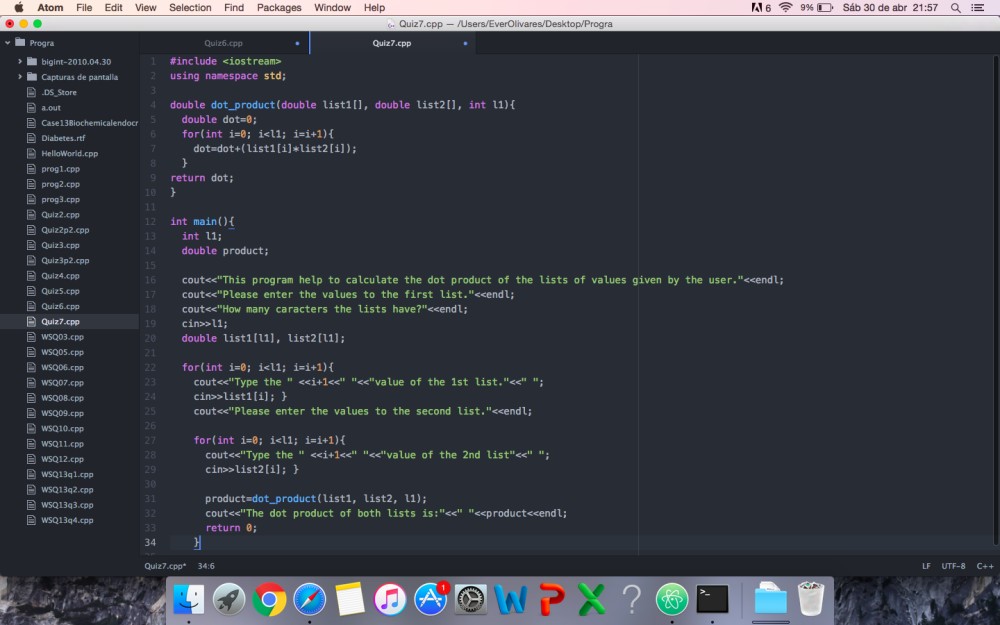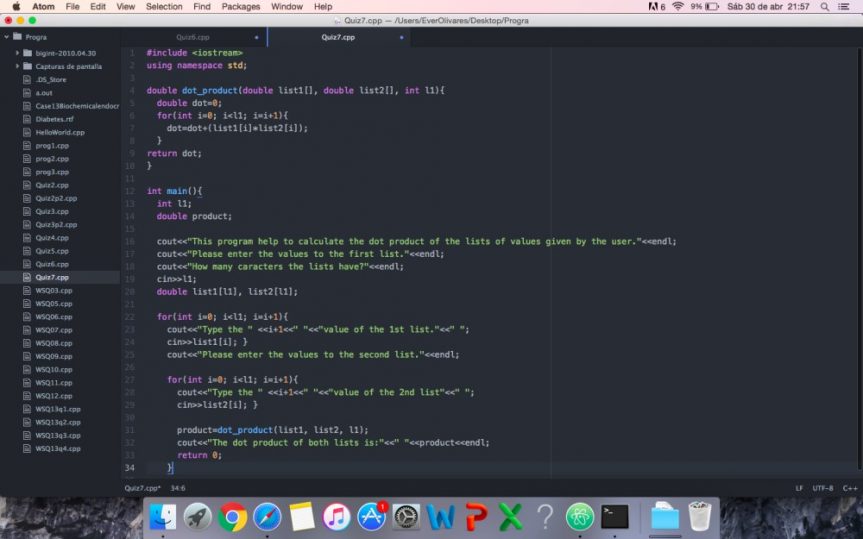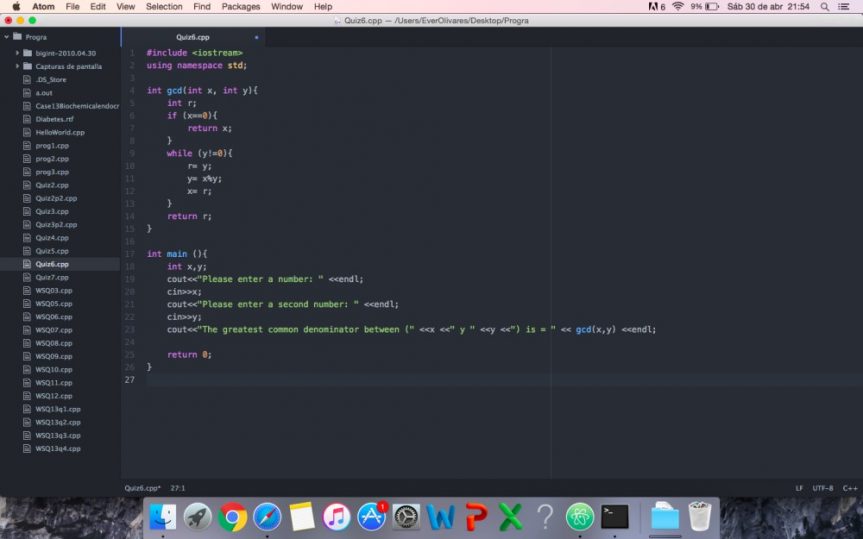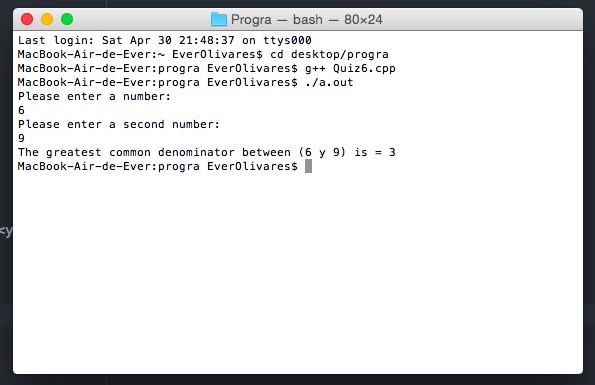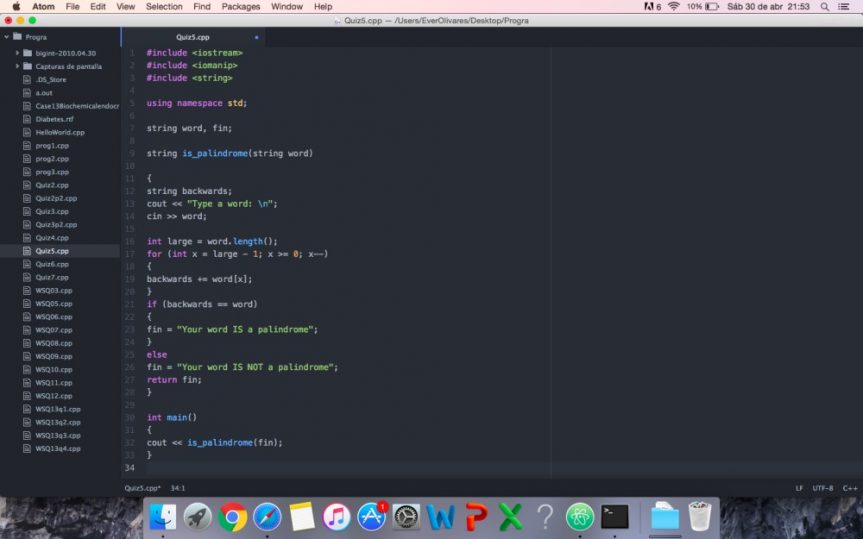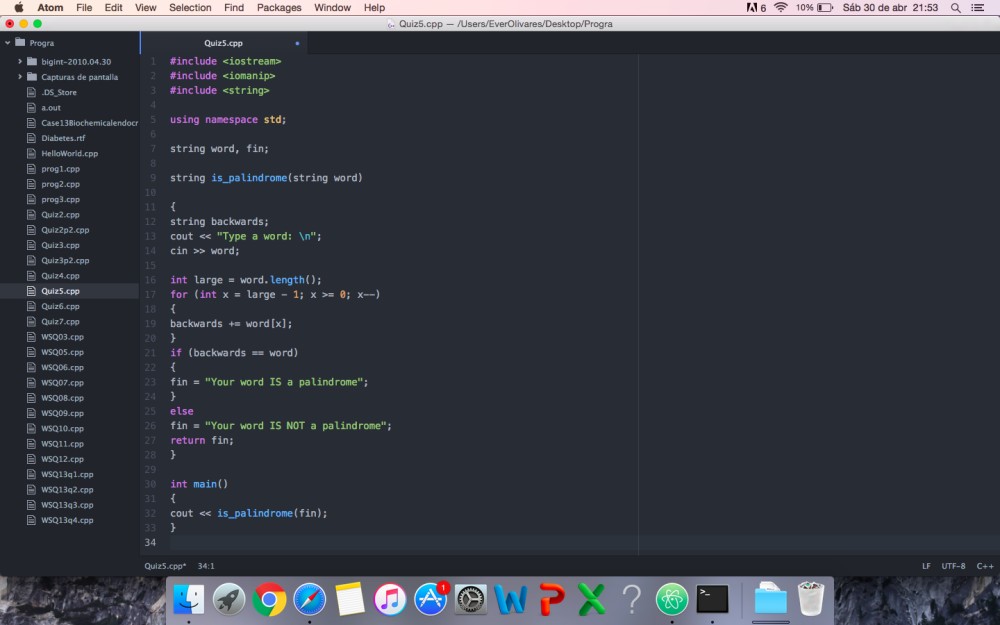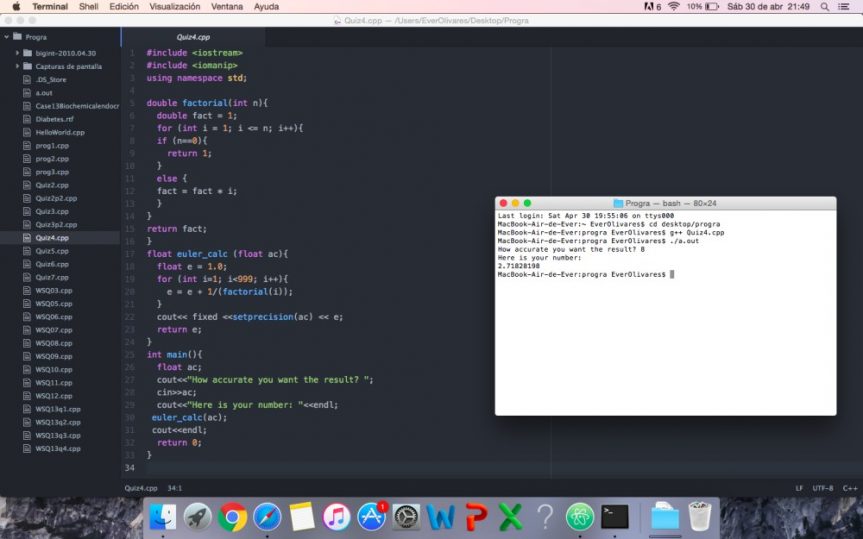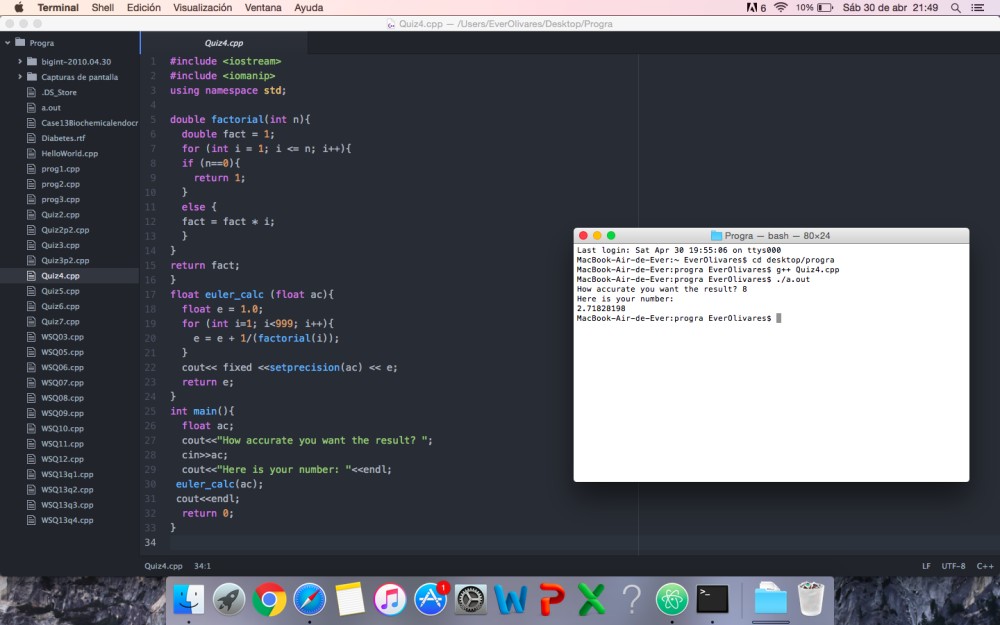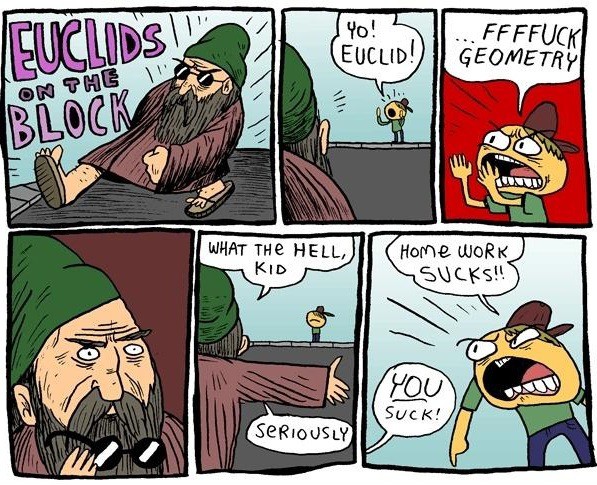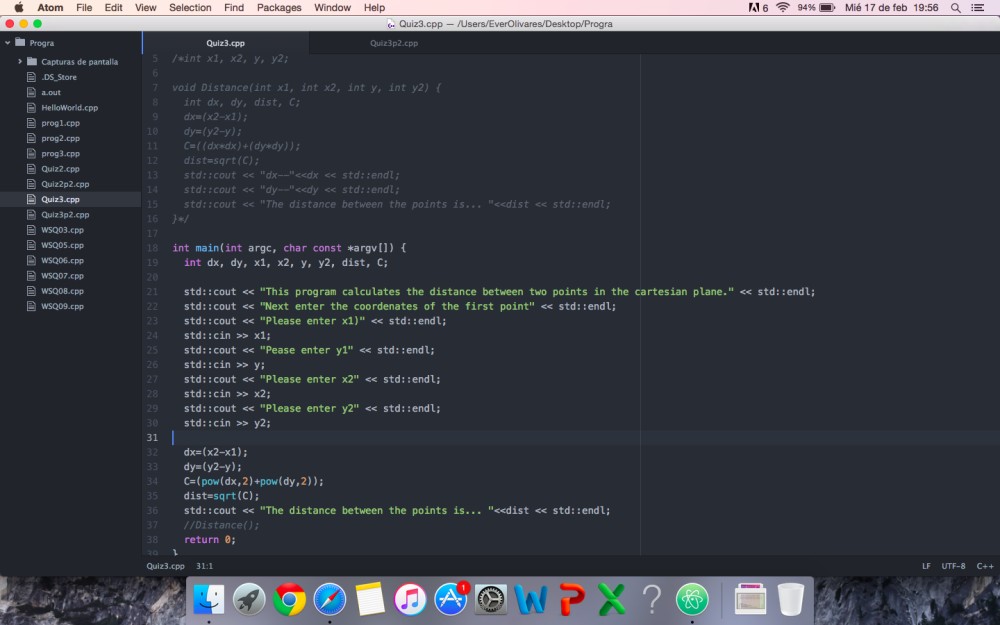Last quiz everyone!!!!! jajajaja in this quiz I had to calculate the dot product of two vectors “seen in physics”, using arrays.
//CODE:
#include <iostream>
using namespace std;
double dot_product(double list1[], double list2[], int l1){
double dot=0;
for(int i=0; i<l1; i=i+1){
dot=dot+(list1[i]*list2[i]);
}
return dot;
}
int main(){
int l1;
double product;
cout<<“This program help to calculate the dot product of the lists of values given by the user.”<<endl;
cout<<“Please enter the values to the first list.”<<endl;
cout<<“How many caracters the lists have?”<<endl;
cin>>l1;
double list1[l1], list2[l1];
for(int i=0; i<l1; i=i+1){
cout<<“Type the ” <<i+1<<” “<<“value of the 1st list.”<<” “;
cin>>list1[i]; }
cout<<“Please enter the values to the second list.”<<endl;
for(int i=0; i<l1; i=i+1){
cout<<“Type the ” <<i+1<<” “<<“value of the 2nd list”<<” “;
cin>>list2[i]; }
product=dot_product(list1, list2, l1);
cout<<“The dot product of both lists is:”<<” “<<product<<endl;
return 0;
}
